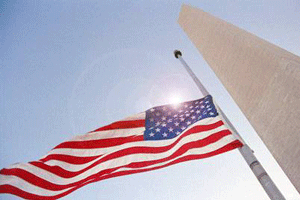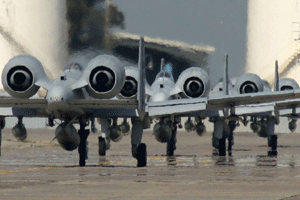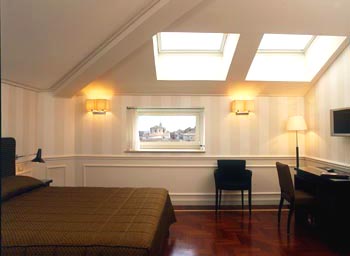|
Naval
Air Station Sigonella
NAS Sigonella is located in eastern Sicily
approximately 16 km west of the city of Catania and approximately 24
km due south of Mount Etna, an active volcano. It occupies a tract
of land at NATO Maritime Airfield Sigonella which is operated and
hosted by the Italian Air Force. The U.S. has maintained a permanent
presence at the activity since 1959. NAS Sigonella provides
consolidated operational command and control, administrative,
logistical and advance logistical support to U.S. and other NATO
forces. In the discharge of its mission, NAS Sigonella is assisted
by a number of tenant organizations and support units.
The mission of US Forces at Sigonella, Rota, and
Souda Bay is to provide Command Control and Logistics Support to US
And NATO Operating Forces. These three facilities are undergoing a
transformation from Maritime Patrol Airfields to Multi-role “Hubs”
providing crucial air-links for USAF strategic airlift in support of
CENTCOM and Africa Area contingency operations.
The primary purpose of US Naval Air Station Sigonella
is to provide consolidated operational, command and control,
administrative, logistical and advanced logistical support to US and
other Nato forces. NAS Sigonella is the major support element for US
SIXTH Fleet Mediterranean. It is the strategic center of the
Mediterranean. Recent political events in the strategic center of
the Mediterranean and Near East have greatly increased operational
requirements and there has been emergent mission tasking.
The first Americans arrived at Sigonella in March
1959, but they stayed in Catania except for daily trips to the
administrative area because there were no buildings ready for
occupancy. During the six months required to make NAF I habitable,
the Navy occupied the large warehouse complex called Magazine
Generale, which is opposite the cemetery on the right side of the
street as one enters Catania from the base. On June 15, 1959, U.S.
Naval Air Facility (NAVFAC) Sigonella was commissioned on top of a
field where damaged German fighters and bombers once landed during
WWII. By the end of August 1959, the NAF II airfield was available
for daylight VFR flights, with 24 flights logged by Aug. 31.
Because of the growing commitment to supporting Sixth
Fleet operations in the Mediterranean and Middle East, NAVFAC
Sigonella had nearly tripled in size by 1977. The rapid growth and
the station's strategic importance to the U.S. prompted officials to
redesignate the facility as a naval air station in 1981.
NAS Sigonella is actually divided into two bases, NAS
I and NAS II. NAS Sigonella consists primarily of operations at NAS
I and NAS II with several additional areas of support.
Most operational work is conducted at NAS II. The
runway, air terminal, operations and most tenant commands are
located here. Once a scarcely populated area, a construction boom
made NAS II the center of base operations by the late 1970's. NAS II
is the Air Field and Operations site and is a joint U.S. and Italian
facility with separate supporting areas. The NAS II site includes
separate areas for NATO Mine, NATO Magazine, and NATO Ordnance
Areas. The NATO Ordnance Area/Mine Depot is located north of and
adjacent to NAS II and has ordnance storage facilities. Finally, the
NATO Magazine Area, located west of NAS II, has ammunition storage
facilities.
About a 10-minute drive north of NAS II is NAS I.
This was the original US Naval Base, but as more and more
departments migrated to NAS II, NAS I became known as the personnel
support facility. NAS I is the Support site and is located
approximately 10 miles west of the city of Catania. The NAS I site
includes Navy Family Housing and is supported by seven leased family
housing sites located off base. NAS I is home to the major shopping
facilities - the DeCA Commissary store, the Navy Exchange Retail
Store (NEX) and Mini Mall, as well as the Stephen Decatur School,
the Navy Family Service Center and the new US Naval Hospital.
Government Housing units are also located on NAS I, giving it the
appearance of a small town. NAS I once included Rocky Hollow Golf
Course. Thousands of rocks were cleared off the golf course during
off-duty hours in 1961. With the steady increase in Sigonella's
quality of life, the number of active duty and family members
increased, (more than 7,500 people in FY96). A bigger and better
hospital equipped to handle the health care needs of its population
became a priority. The three-level, 98,000 square foot U.S. Naval
Hospital took over the links in 1993.
The mission of U.S. Naval Computer and
Telecommunication Station Sicily [NCTS Sicily] is to provide
command, control, communication, computer, base level information
infrastructure services and customer assistance to Naval Air
Station, Sigonella, its tenant activities, multi-national forces and
other Department of Defense customers. There is a communications
transmitter facility located on privately owned leased land
northwest of NAS II. Another remote communications transmitter site
is located near Niscemi, roughly 65 miles southwest of NAS II.
Top
Menu
Welcome to Sigonella
Welcome to U.S. Naval Air Station Sigonella, the logistical "Hub of
the Med!" Due to its crucial and strategic location in the center of
the Mediterranean, NASSIG plays a vital role in supporting joint and
combined operations in the European theater, and provides the
shortest logistics route from CONUS to Southwest Asia and the Indian
Ocean. The importance of the base is reflected in our mission: to
provide logistics and fleet support to U.S. military and NATO forces
throughout the Mediterranean and Middle East, while ensuring the
highest quality of life for our Sailors and their families stationed
here.
NAS Sigonella is an Italian Air Force base commanded by an Italian
colonel. NASSIG is a tenant command, which means we share the base
with our Italian hosts. Although a tenant of the Italian Air Force,
NASSIG acts as landlord to more than 30 other U.S. Major tenant
commands include the U.S. Naval Hospital Sigonella, CTF-67, EOD
Mobile Unit-8, Fleet Industrial Supply Center (FISC) Sigonella, AIMD
Sigonella, and the Naval Computer and Telecommunications Station
Sigonella. The air station's Operations Department operates the C-26
transport aircraft that, in concert with deployed Naval Reserve C-9,
C-40 and C-130 aircraft, provide logistics support throughout the
European theater and Middle East.With a major base recapitalization
underway, NASSIG is undergoing a facelift that has not only provided
modern, comfortable housing and impressive MWR facilities, but will
ensure Sigonella's viability well into the next century.
While the main business of any naval air station is flying, carrying
out our common mission takes the teamwork of all hands; both tenant
commands and air station departments. Together, we can provide
first-rate fleet support, while taking care of our Sailors and their
families, all in close cooperation and friendship with our Italian
hosts.
Top
Menu
An American in Sicily
During your tour of duty in Sicily, you will be much more than an
American tourist. As a temporary resident and guest of Italy, you
are expected to conduct yourself at all times as an "ambassador" of
both America and the U.S. military. Your job as a diplomat will be
made easier if you attempt to learn and understand the language and
customs of our host nationals.
Top
Menu
Sicily,
"Isola del Sole" (Island of the Sun)
Sicily, the largest island in the Mediterranean Sea separated from
the southwestern tip of mainland Italy by the narrow (under two
nautical miles wide) Straits of Messina, has a typically sunny
climate. The island is roughly triangular in shape and with adjacent
small islands forms a region of Italy inhabited by six million
people.Located between the continents of Europe and Africa, the
island of Sicily has been a historically significant crossroads for
thousands of years. The Greeks arrived first, calling the island "Trinacria,"
referring to the island's triangular shape.Sicily boasts a long,
rich history, and diverse cultural heritage, due to the frequent
occupation by foreign powers. Because of its important strategic
position, midway between the Straits of Gibraltar and the Suez
Canal, Sicily has been the site of meetings between many
civilizations, in battle as well as peace, and each left traces of
its culture and history. The Romans, Byzantines, Arabs, Normans,
Germans, Spaniards, French and Austrians followed, all helping to
shape Sicily's past.
Present-day Sicily reflects this rich heritage. Here, you can find
catacombs, Roman amphitheaters, Greek temples, Norman castles, and
Arab baths mixed among modern cities. Some claim that there are more
Greek ruins here than there are in Greece, and more Norman castles
than in Normandy. If you travel to the interior of the island, you
can still experience rich culture and old-world charm of
villages.Sicilians are a very warm and hospitable people,
particularly to those interested in learning their way of life and
language, so do not hesitate to communicate with them.
They are also very religious and celebrate many elaborate religious
festivals and holidays. Each town has a patron saint, and Sicilians
honor the saint's birthday with feasts, parades, and fireworks.
Top
Menu
Sunny Sigonella - Things to
do
"Welcome to Sunny Sigonella," is a phrase newcomers often hear. You
are about to discover a fascinating island of exotic extremes and
unforgettable landscapes -- from bustling modern cities to quaint,
picturesque villages tucked into the mountainside; from sandy, white
beaches to a coastline of jagged, black lava rock; from large
harbors graced with luxury yachts to small harbors filled with
wooden fishing boats; from the cheerfully noisy bustle of an outdoor
market to the quiet grace of upscale stores like "Benetton." Sicily
has much to offer. A challenging hike up Mt. Etna to see Europe's
most active volcano is as thrilling as skiing down its snowy slopes
in the winter. Sunbathe on the island's beaches, or explore its
beautiful underwater world. Sicilians are very active in the theater
and arts. Summer plays and operas are often performed in the ruins
of the island's magnificent, ancient amphitheaters. The island is
also noted for its fine embroidery, and in some communities, rich,
colorful, carpets are still woven by handOpen-air markets abound in
Sicily and the local custom is to haggle with merchants over prices.
In most towns, the roadways are lined with fresh fruit and vegetable
stands.
Beaches ranging from soft white sand to lava rock border Sicily.
Some are large and crowded, and some grace private coves. The most
developed beaches are on the northern and eastern sides of the
island between Palermo and Catania. Sicily is a fascinating and
unique island, of color and contrast, myth and legend. Families can
take a day trip every weekend for a year and not see everything
there is to see on the island.
But the
experiences and memories will last a lifetime.
Top
Menu
Sigonella on the Internet!
Information about Sigonella and its many tenant commands is now just
a click away on the internet! Point your browser to
http://www.sicily.navy.mil to learn more about your new command.
For more information about health services see the
Facilities and Services chapter.
Top
Menu
Passports
Military family members should have two passports -- one government
official or "no-fee" passport for entry into Italy is required and a
tourist passport if they wish to travel. Check with your local PSD
for passport forms and information. Servicemembers may travel to
NATO countries using their military identification cards while under
orders or NATO leave papersHowever, tourist passports are
recommended for personal travel and are required for many non-NATO
countries. Non-military personnel and their family members should
carry their passports with them while traveling in Italy.
Visas
Italian law requires all civilians who enter Italy, except European
Union citizens, to obtain visas prior to their entry into Italy.
This law does not require active duty service members to have visas.
Civilians who are visiting Italy for less than 90 days as tourists
do not need visas.
What type of Visa do I need?
Members of the U.S. civilian component and U.S. contract workers who
are pending orders to Italy must obtain visas for work purposes ("visto
per motivo di lavoro") prior to traveling to Italy.Family members of
the U.S. military or civilian component and dependents of U.S.
contract workers must obtain visas for family purposes ("visto per
motivi di famiglia") prior to traveling to Italy.
Obtaining your Visa:
Visas can be obtained through the assistance of the PSD of the
detaching command or at one of the Italian Consulate Offices in the
United States (call before you go). For a listing of the Italian
Consulate Offices, go to
http://www.state.gov/www/travel/consular_offices/i_sec.html. Visas
cannot be obtained once personnel arrive in Italy.
Italian Consulate
690 Park Avenue
New York, NY 10020
(212) 737-9100
Italian Consulate
2590 Webster Street
San Francisco, CA 94115
(415) 931-4924
Italian Embassy
1601 Fuller Street
Washington, DC 20009
(202) 328-5500.
Top
Menu
Rules of the Road
While driving on Italian roads, you are required to carry with you
at all times: a valid driver's license with Italian translation,
Military Registration/Certificate of Title (proof that your car is
in Italy legally), Cover Plate authorization, and Valid Italian
Insurance documents/window sticker (proof of insurance). Driving
under the influence of alcohol is an extremely serious offense in
Italy. A blood alcohol level of 0.05 is positive proof of drunk
driving. Refusal to submit to a breathalyzer test results in
immediate loss of the license for 6 months (one year on base), and a
possible fine of up to 1,000.00 euro. If you have had too much to
drink, leave your vehicle; take a taxi or call a friend.
The following basic rules for driving in Italy will
save you stress as well as injury:
1. Do not pick up hitchhikers.
2. Many intersections lack stop lights or traffic control. The
vehicle on the right has the right-of-way, unless there is a stop
sign.
3. Some drivers may take seemingly unnecessary and dangerous risks
to gain a few feet of road; do not take the same risks and let them
pass.
4. Low beams are used on main highways or darker roads. Headlights
have always to be turned on when driving outside city/town borders.
Overtaking cars, especially at night, should briefly flash their
headlights to alert the car being passed. Flashing headlights are
also used to signal stopped traffic at crossroads, or to signal
slower vehicles to move right and permit a faster vehicle to pass.
5. When a car behind you flashes its lights, move to the right lane
as soon as it is safe to do so. Respect speed limits and overtake
only when road conditions and/or traffic signs allow you to.
6. While horn blowing is technically illegal in many Italian cities,
it is loosely enforced. Most people blow their horns to signal
approach to a blind intersection, or intent to pass.
As with other cultural differences, driving habits in
Sicily may at first seem strange and even threatening. If you
maintain a commitment to alertness and flexibility, you will reduce
the anxiety of this adjustment.
Top
Menu
The Home Teams
In Italy, there are several law enforcement agencies. The most
common are:
Polizia di Stato (State Police): It operates on the national
territory and deals with the full spectrum of order and law
enforcement, such as crime investigations, crime prevention, counter
terrorism, undercover and assault operations. Polizia has different
branches, such as "Stradale" (Highway Patrol) and "Ferroviaria"
(Railway Police). The State Police and Highway Patrol also respond
to traffic accidents. Usually, Polizia personnel wear blue uniforms.
Carabinieri: Even if they have a military ranking - so their
authority is acknowledged both by civilians and military members -
the role of Carabinieri is that of a regular police force dealing
with all aspects of criminal investigations, crime prevention and
repression. Road patrol and traffic accident investigations also
fall under their responsibilities. Their uniform has black trousers
with red stripes on both sides, and they are recognizable by the
white or black belt (sash) across the chest over the uniform.
Guardia di Finanza (Finance Guard): The Guardia di Finanza deals
mainly with economic crimes; it is a specialized customs police
force, coping with tax evasion, counterfeit currency, contraband,
counter narcotics, arms smuggling and fraud. Its officers wear green
uniforms.
Polizia Municipale (City Police): Enforce traffic laws within city
limits, set up checkpoints, and also issue vending licenses.
Top
Menu
NAS I vs. NAS II
NAS Sigonella is actually comprised of two sites, NAS I and NAS II.
NAS I is the support site where the Navy Exchange, Commissary,
Mid-Town Recreational Complex, Navy Lodge and Navy Hospital are
located. NAS II is the operational base. As you travel between NAS I
and NAS II, you may encounter herds of goats and sheep, as well as
cattle, being herded along the roadway. This is a common event in
the area. The shepherds, assisted by a dog or two, can expertly
maneuver their flocks around your vehicle. You can do your part by
slowing down and allowing them to pass. Newcomers will also note the
plentiful olive trees, vineyards, and orange groves on the road
between NAS I and NAS II. Many types of citrus grow throughout the
province, including the popular blood oranges, so named because of
their deep red interior color.
Top
Menu
Sicilian Sights: So much
so near
There is an abundance of breathtaking sights and warm-hearted,
generous citizens throughout Sicily. During your tour at Sigonella,
you really should take advantage of every opportunity to travel. A
wealth of history awaits you. Many notable destinations are less
than an hour away by car, making an excursion after working hours
both feasible and enjoyable. You can also explore the island by bus,
train or organized tours offered by MWR or local tourist agents. It
has been said that 70 percent of the world's art is in Italy-this
just gives you some indication of the scope of the task to describe
everything. Add to that the incredible wealth of Greek and Roman
history, plus the history of the rest of Europe, and it becomes
overwhelming. Those who travel and explore, enjoy Sicily the most.
Listed here are several of the most popular destinations in Sicily:
Agrigento:
This ancient city houses the ruins of more than 20 Greek temples,
some in remarkably good condition. The international festival of the
almond blossom tree is held every February. The Valley of Temples is
a must-see during your tour.
Catania:
From a beautiful baroque cathedral to the infamous fish market,
Catania has something for just about everyone.
Cefalu':
Cefalu', which dates back to the 9th century B.C., has long been
considered the pearl of the northern coast due to its beautiful,
inviting beaches and picturesque old town. In the summer, Cefalu
welcomes many visiting yachts. But it is best known for its
cathedral, which is one of the best-preserved examples of Norman
church architecture in Italy.
Messina:
The province contains many ruins and monuments of exceptional
historic, artistic, and archeological interest. Be sure to witness
the "performance" by the astronomical clock at noon when all the
statues move, the lion roars three times and the cock crows and
flaps his wings. Then, a dove flies as the church of Montallo
appears. Slowly and majestically, angels file past the Madonna, one
handing her a letter while another takes it back, and the Virgin
blesses them.
Mount Etna:
Mount Etna is one of the world's major active volcanoes and the
largest in Europe (reaching more than 11,000 feet). It is a
magnificent sight, particularly in winter and spring when snow
blankets the top and dense vegetation covers the bottom. On the
northern slope, three ski lifts and a national skiing school operate
during the ski season.
Palermo:
Palermo, Sicily's largest city, is one of the richest in art and
history; every period has left traces. It is a city of varied
architectural influences: Phoenician in origin; Roman in the mosaics
of Villa Bonanno; Arabic in some churches which were once mosques;
French for the Hautville Dynasty, which left wonderful monuments;
German for the Hohenstaufen tombs in the cathedral; Spanish in the
names of some of its streets and piazzas, and for architecture
recalling three centuries of rule by viceroys; and finally, Angelin
and Bourbon recalling other periods of French domination.
Siracusa:
According to Cicero, Siracusa was the finest and largest of all
Greek cities and is now one of the most attractive towns in Sicily,
with beautiful surrounding scenery and important ruins of the
ancient past. Main attractions include the Greek theater, catacombs,
stone quarries, and many ancient monuments.
Taormina:
Taormina is a vision of beauty that stimulates the eyes, spirit and
imagination. The Greek theater, built in the third century B.C.,
commands one of the world's most beautiful views. The town itself is
built high above the famous coast of Taormina which thousands of
tourists from all over Europe visit in the summertime. Naxos, a
small town near Taormina, was the first Greek colony in Sicily,
built in 737 B.C.
Top
Menu
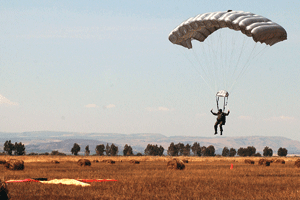
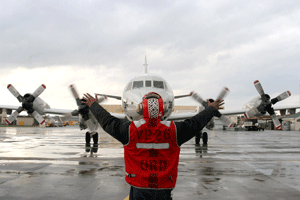 |
